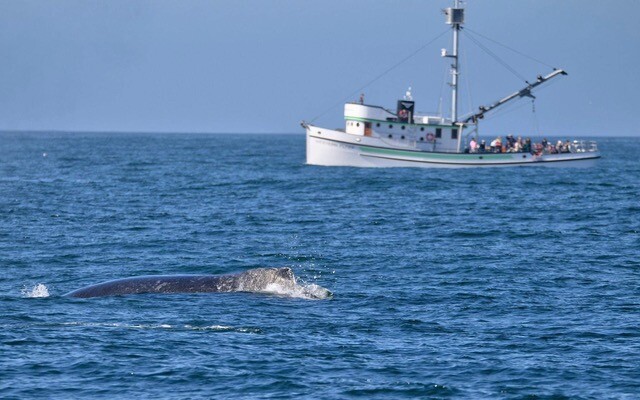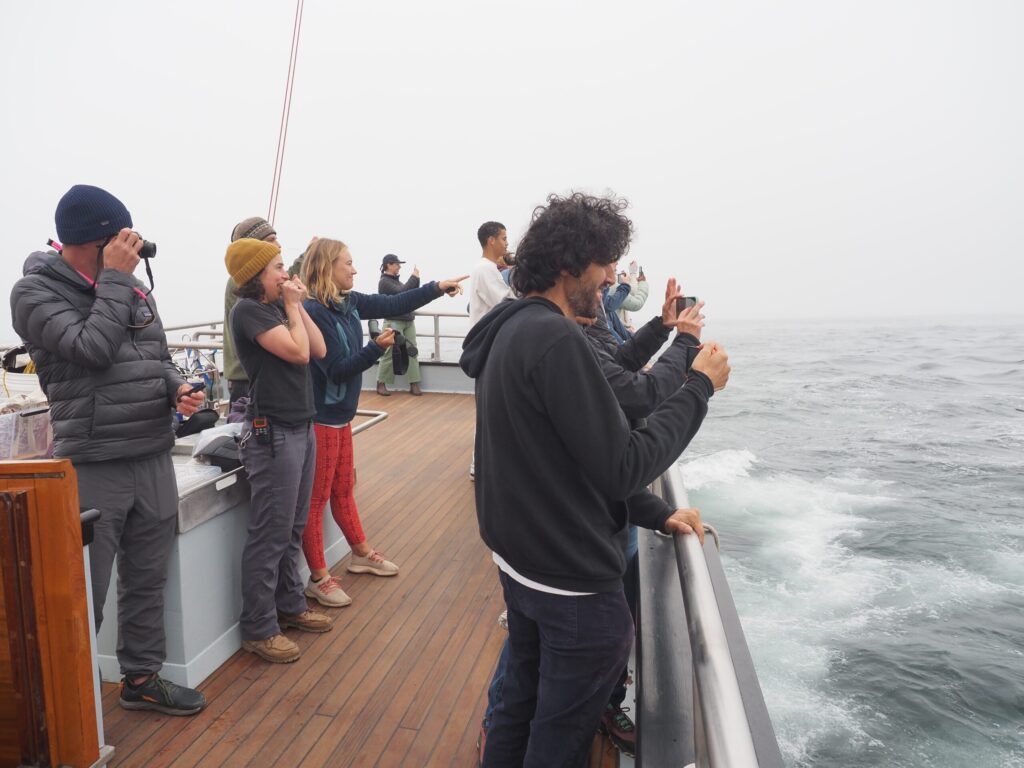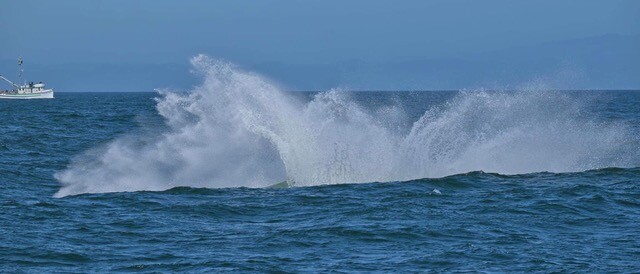By Sierra Garcia

On my first day working aboard the Western Flyer, we were held hostage by humpback whales.
The cruise plan for Cabrillo College’s Field Methods in Oceanography course included stops at three stations progressively further into the Monterey Canyon. At each station, the fourteen students on board would help us tow a plankton net on the surface and sample slices of the water column a thousand feet deep. We’d cap off the day by jaunting north for students to pilot the remotely operated vehicle off Seacliff State Beach.
It was a solid educational plan—but the Flyer never made it past the first sampling site.
Not 20 minutes after we’d left the harbor, we enjoyed several humpback whale sightings, all at a respectable distance. But as we approached our first sampling site, a few whales approached our stern at close quarters. Everyone on the boat rushed to the aft deck. Along with two adult whales was a calf, barely the size of a large van.
Towing a plankton net requires keeping the boat moving ahead slowly and steadily to keep the line taut. But each time we thought the whales had gone and resumed prepping the net, the trio resurfaced: now port, now starboard, now dead ahead. They reassured us that they weren’t leaving with forceful, pungent huffs from their nostril-like blowholes, slow waves of their pectoral fins, and graceful shows of barnacle-encrusted flukes. The captain threw the engine in neutral, and at one point, a massive, diving blotch bloomed on our echogram image: one of the whales was swooping directly below the path of our pinging sonar aimed at the seafloor.

As the morning turned sunny and warm, a shout went up: “Orcas!” Just ahead of the distant, steeply pointed black dorsal fins, a breaching, frantic mass of sea lions swam away. Our earlier encounter took on new meaning: the humpbacks that had been so attached to our boat may have been using the Flyer to shield the calf from the pod of killer whales.
Although we returned with less than half of our originally planned samples, the day was an invaluable learning experience for the budding oceanographers onboard. The whales taught us that field scientists (and especially those working on the ocean) should always plan for the unexpected and reminded us that we’re never fully in control once at sea. The students will adjust to the shape of the new data, perhaps abandoning their planned questions in favor of creative new ones.
And for those that go on to other careers? Many may eventually forget the difference between diatoms and dinoflagellates, or the components of a CTD cast. But no one who was on the Flyer that day will forget the smells and sounds of the whales.

